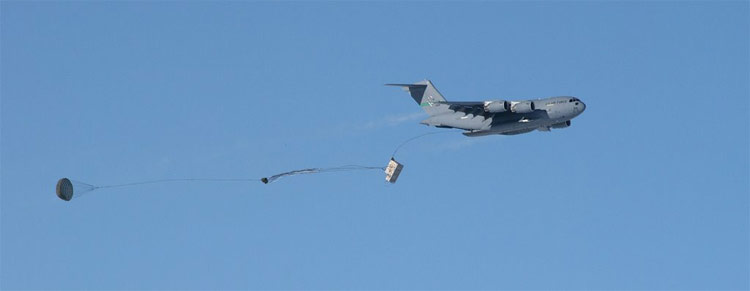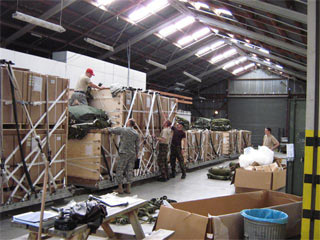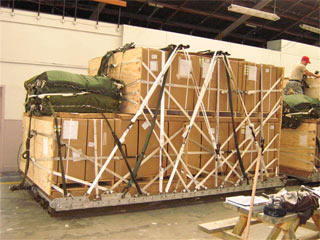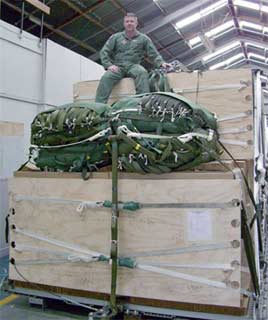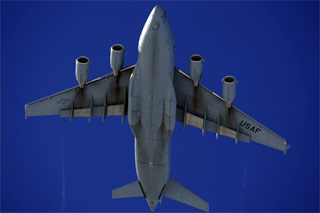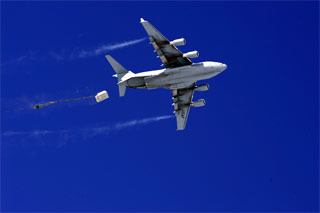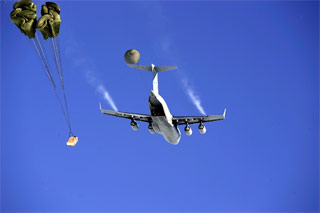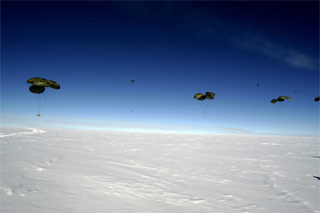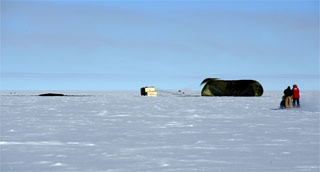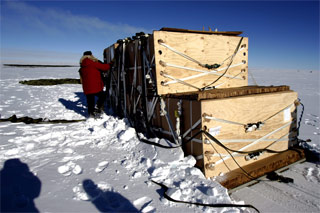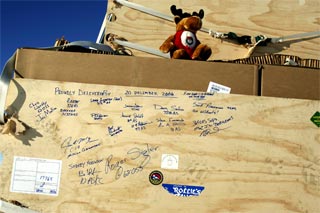Airdrop--December 2006
|
For the first time since July 1999 when medical supplies were airdropped to treat Jerri Nielsen, an airdrop was conducted at Pole on 20 December 2006. The flight left Christchurch just before noon, and after a refueling stop in McMurdo, the flight arrived in the skies over Pole around 2030. The drop consisted of 4 air pallets with triwalls of food, total weight was just under 70,000 pounds. These were dropped in a single pass from a height of about 1000 feet. The operation was conducted by a 14-person crew, members of the Air Force Reserve's 446th Airlift Wing based at McChord Air Force Base in Washington state. Here's a more detailed description of the operation prepared by Air Force Lt Col Greg Pike. Pike was at Pole along with Sr Master Sergeant Jim Masura to act as drop zone coordinators (Pike was present for the last summer airdrop of construction material in 1991-92, and later flew the famous midwinter 1999 airdrop event. Both of these drops used the now-retired C-141 aircraft): "The main goal of this summer's C-17 airdrop is proof of concept. Before, all airdrops in the C-141, LC130 and older aircraft at the pole were computed by the navigator. He would figure out a sight angle, he knew his ground speed and the ballistics of the cargo and chute. When the drop zone (DZ) crossed his sight angle (navigators had many techniques on sight angle, one was drawing a grease pencil line across the front windscreen) he would start a stop watch for a given number of seconds and would count down and call green light, the co-pilot would then release the load for the drop. This is a very low tech delivery method , not very accurate but very reliable if you could see the DZ. The C-17 has done away with the navigator and flight engineer and replaced them with computers. These are far more accurate, and in normal conditions some what reliable. But as all of you know the South Pole is not a normal place and the Air Force and Boeing would like to know a drop will work near the pole when the plane is flying in grid mode. The pilots have run the profile in the simulator with mixed results and Boeing 'thinks it should work just fine'. Boeing has installed a special data collection computer on the C17; we will be using the data to help with any future software upgrade for polar operation which might be needed. | |
| The aircraft first did a dry run, then circled back and made the drop approach about 10 minutes later. The ramp opened and a drogue chute appeared, this pulled the first pallet out. The others followed in quick succession. Afterward, the C-17 circled again and did a photo-op flyby down the skiway. | |
But there's more...from the vantage point of the aircraft, here's a video of the drop from start to finish (southpoleairdrop.mpg) (6MB, broadband connection recommended). All of the Pole photos above were taken by Forest Banks, the Pole panorama is one of his favorites. The Christchurch photos and video were provided to the station by the Air Force team. Thanks also to Liesl Shernthanner and Glenn Grant. | |
